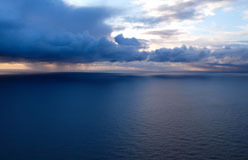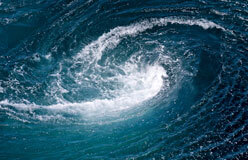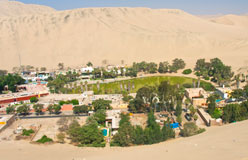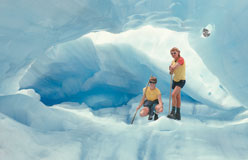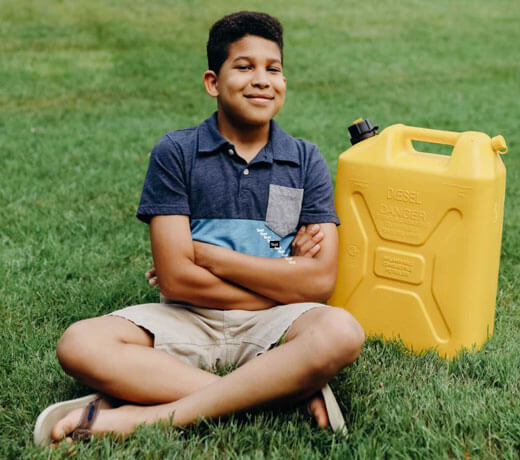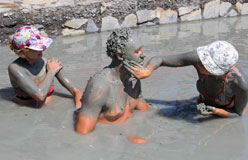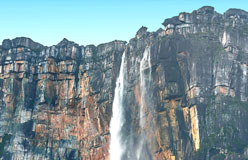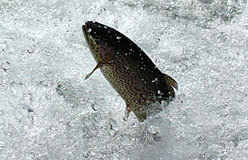The continent of Antarctica is a land of ice. Almost the entire continent, which includes the South Pole, is covered with ice.
The ice blanket is several miles deep in parts, covering all but the very tops of the highest mountain peaks. Near the coast, glaciers (slow-moving rivers of ice and snow) crawl down the mountains and flow into the ocean. Sometimes, chunks of the glaciers, some as large as a city, split off, crash into the ocean, and float away to become icebergs.
At the opposite end of the Earth, an ice-covered ocean surrounds the Arctic, or North Pole. The ice cracks, crashes, and swirls on top of ocean currents. The ice cover shrinks in summer and expands in winter, but it never disappears. North and South, the polar regions of the Earth are unusually beautiful places, frozen with ice.
